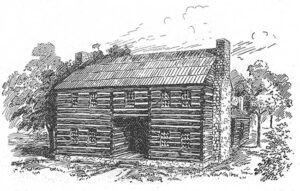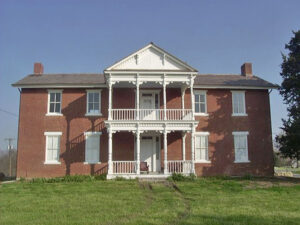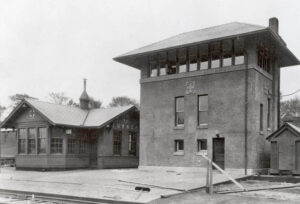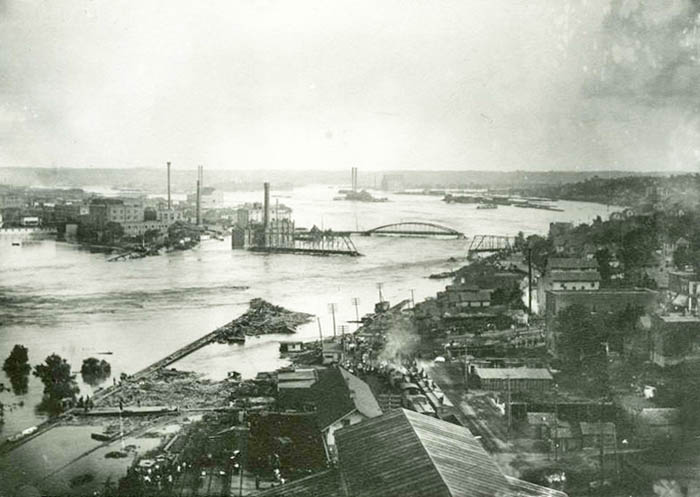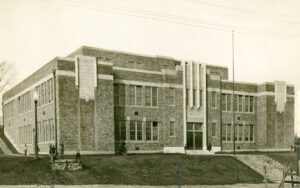Turner, Kansas, now a neighborhood within Kansas City, Kansas, was formerly an unincorporated community of Wyandotte County.
The Shawnee Indian Prophet Tenskwatawa, the brother of Tecumseh, created Shawneetown in the area near present-day Woodend and Shawnee Drive at 35th Street. He made his final home near Turner in Argentine, Kansas. Blue Jacket, Tecumseh’s adoptive brother, was known to the early European settlers in this area. According to legend, one of the Shawnee chiefs, Fish, died and was buried in the Shawnee Township Cemetery, which is located in the heart of modern-day Turner.
In 1828, Cyprian Chouteau established the American Fur Company trading post at present-day 55th Street and Speaker Road. The original Shawnee Methodist Mission was built in 1830 near Chouteau’s old trading post near the heart of the Turner community. Reverend Thomas Johnson built the mission for the Shawnee Indians. It was located at what would become the 5100 block of Edgehill Drive. This mission was open until 1839, when the Mission School was built at the current location in Johnson County.
The Delaware Crossing, or “Military Crossing,” sometimes called “the Secondine,” was where the old Indian trail met the waters of the Kansas River. Around 1831, Moses Grinter, one of the earliest permanent white settlers in the area, set up Grinter Ferry. The ferry was used by traders, freighters, and soldiers traveling between Fort Fort Leavenworth, Kansas, and Fort Scott, Kansas, on the military road. Others would cross this area on their way to Santa Fe, New Mexico. Moses Grinter’s home, Grinter Place, still stands at 1420 South 78th Street.
In 1838, the mighty steamboat, The Antelope, docked in the area. It carried several scientists and pioneers heading to Fort Pierre in South Dakota.
Various farmers took up residence around Turner by the fall of 1854. A farmer and contractor, Charles Lovelace, came to Kansas in the fall of 1856 and established a sawmill at present-day 55th and Speaker Road. He moved his family here the following spring. There was also a grist mill nearby. The community that formed was first called Farmer, Kansas, and tried to incorporate itself on October 8, 1859. However, the attempt failed because the community didn’t have enough population to achieve the statute requirements.
During the Civil War, members of William Quantrill’s Raiders sacked a few homes and killed some of the area’s inhabitants around July 1863. Various families living in the area that today is between Swartz Road from 51st to 53rd Street suffered in the attacks.
The Atchison, Topeka & Santa Fe Railroad went through Argentine, Turner, and the Kaw Valley. From the railroad yard in Argentine, the railroad cars would be turned around at the Farmer train platform. The Farmer train station’s circular platform stood on 55th Street.
A post office was established on January 29, 1877.
Charles Lovelace operated the sawmill until 1878, when he owned and operated the Kansas Valley Flouring Mills. The mill was four stories, with three runs of buhrs, a set of rollers, and a capacity of 50 barrels per day.
On September 23, 1879, the town’s name was changed to Turner.
In addition to running the flouring mills, Charles Lovelace was extensively engaged in contracting, including furnishing railroad companies with ties and filling several contracts with the Kansas City Smelting and Refining Company. In the early 1880s, he built the sub-structure for a bridge across the Kansas River at Kansas City for the Atchison, Topeka & Santa Fe Railroad.
The Flood of 1903 hit Turner. In 1910 Turner’s population was about 200 people. At that time, it had a few general stores, a school, a money order post office, a telegraph, and express facilities.
Turner and other parts of Kansas City, Kansas, were hit by the Great Flood of 1951, resulting in the “Highland” community being built for displaced individuals from Argentine and Armourdale.
The Turner post office was discontinued on September 1, 1958.
Turner was annexed to Kansas City, Kansas, in 1966.
©Kathy Alexander/Legends of Kansas, updated July 2023.
Also See:
Extinct Towns of Wyandotte County
Wyandotte County Photo Gallery
Sources:
Kansas City Public Library
Kansas Post Office History
Blackmar, Frank W.; Kansas: A Cyclopedia of State History, Vol I; Standard Publishing Company, Chicago, IL 1912.
Cutler, William G; History of Kansas; A. T. Andreas, Chicago, IL, 1883.
Morgan, Perl W.; History of Wyandotte County, Kansas and Its People, Lewis Publishing Company, Chicago, IL, 1911
Wikipedia


